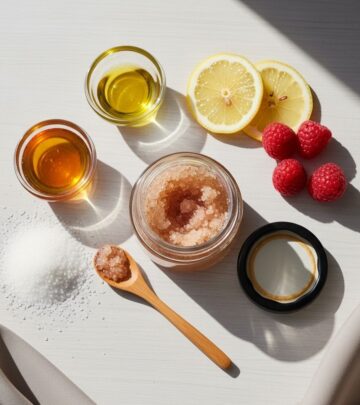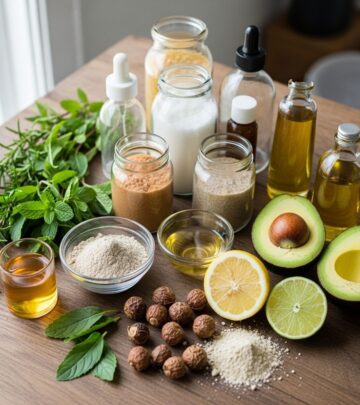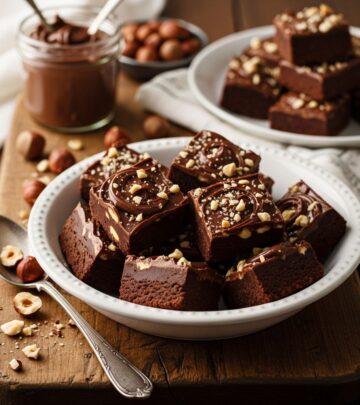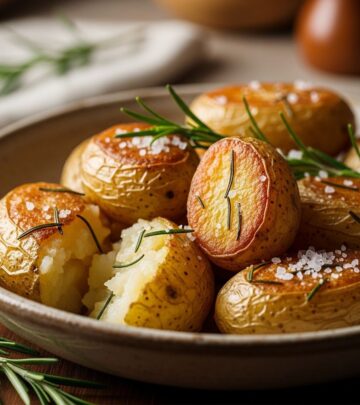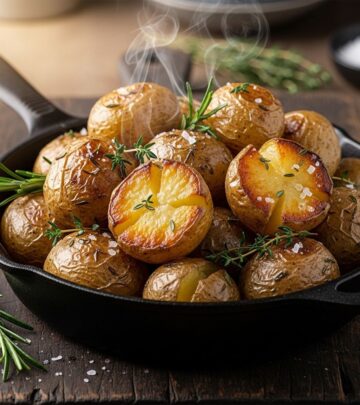Potatoes Au Gratin Recipe: 6 Expert Tips For Creamy Results
Indulge in rich, cheesy layers baked to golden perfection for cozy meal moments.
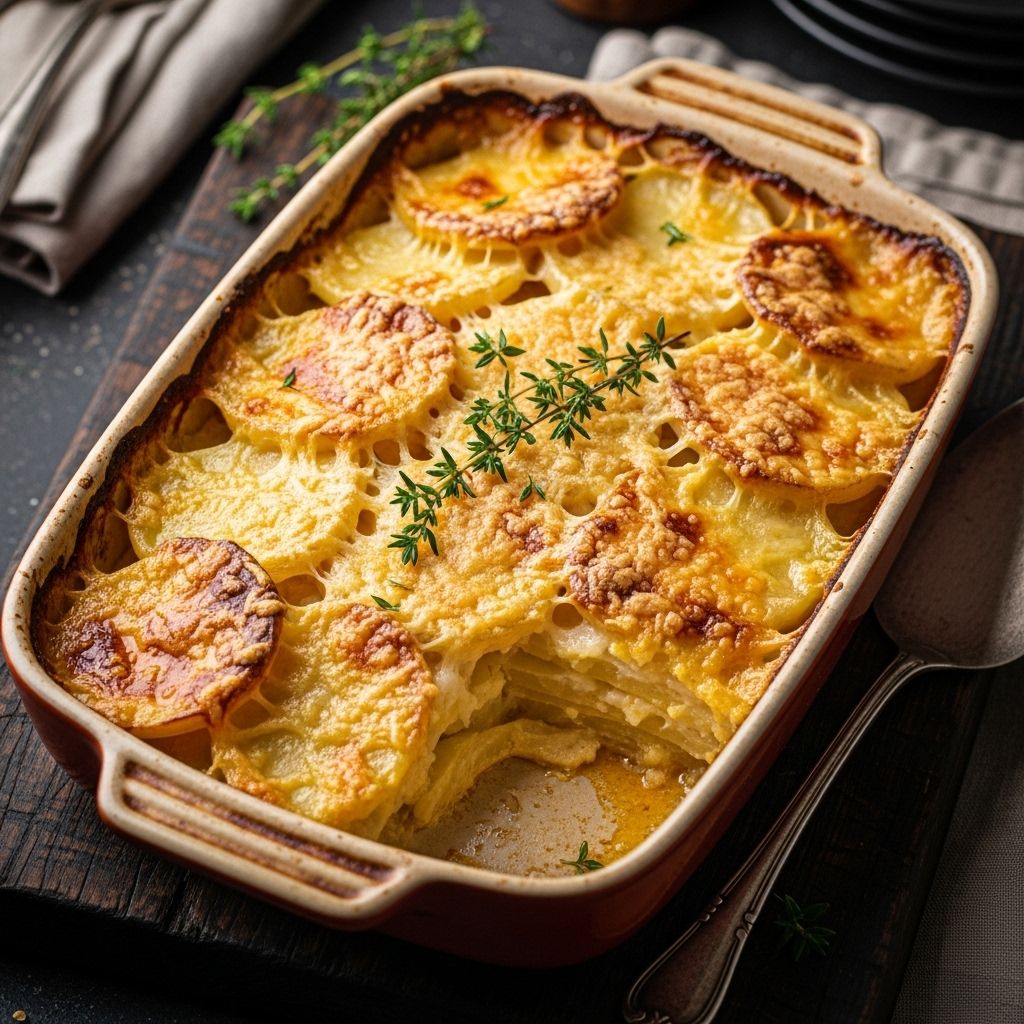
Image: HearthJunction Design Team
Creamy Au Gratin Potatoes: The Ultimate Comfort Side Dish
There’s something undeniably comforting about a dish of creamy au gratin potatoes fresh from the oven. With its layers of thinly sliced potatoes bathed in a rich, velvety cheese sauce and baked until golden and bubbly, this classic side dish has earned its place as a staple at holiday gatherings, Sunday dinners, and special occasions. Whether you’re serving it alongside a perfectly cooked roast, a holiday ham, or as the star of a vegetarian meal, au gratin potatoes never fail to impress and satisfy.
This comprehensive guide will walk you through creating a decadent, restaurant-quality potato au gratin that’s sure to become a family favorite. We’ll cover everything from selecting the right ingredients to achieving that perfect balance of creamy interior and crispy top that makes this dish so irresistible. With a few simple techniques and quality ingredients, you’ll be able to elevate your potato game and create a side dish that just might steal the spotlight from your main course.
What Makes Au Gratin Potatoes Special?
Au gratin potatoes are distinguished by their creamy sauce and cheesy topping. The term “au gratin” refers to a dish topped with browned breadcrumbs or cheese (or both) and is derived from the French word “gratter,” meaning “to scrape” – referring to the crispy, scrape-worthy layer that forms on top during baking. Unlike scalloped potatoes, which traditionally feature a cream sauce without cheese, au gratin potatoes incorporate cheese both in the sauce and as a topping, creating an intensely rich and flavorful dish.
What makes this particular recipe stand out is its perfect balance of simplicity and decadence. The cheese sauce starts with a classic roux, creating a silky texture that coats each potato slice. When baked, the potatoes become tender while soaking up all that cheesy goodness, resulting in a dish that’s creamy throughout with an irresistibly golden, slightly crispy top.
Essential Ingredients for Perfect Au Gratin Potatoes
The beauty of au gratin potatoes lies in their simplicity. With just a handful of basic ingredients, you can create a dish that tastes like it came from a gourmet restaurant. Here’s what you’ll need to gather before starting:
For the Potato Base:
- Potatoes: Russet potatoes are the traditional choice for their high starch content, which helps create a creamy texture. You’ll need about 4 pounds, peeled and thinly sliced. Yukon Gold potatoes make an excellent substitute if you prefer their buttery flavor and creamier texture.
- Onion: One medium yellow onion, thinly sliced into rings, adds a subtle sweetness that complements the richness of the cheese sauce.
- Salt and pepper: Simple seasonings that enhance the natural flavors of the potatoes and cheese.
For the Cheese Sauce:
- Butter: The foundation of the roux that will thicken your sauce, providing richness and flavor.
- All-purpose flour: Works with the butter to create a roux, thickening the sauce to a perfect consistency.
- Milk: Whole milk creates the creamiest texture, though 2% will work in a pinch.
- Cheddar cheese: Sharp cheddar provides the best flavor contrast, but medium cheddar works well too. Freshly grated cheese melts more smoothly than pre-shredded varieties.
- Salt and pepper: To season the sauce to perfection.
Equipment You’ll Need
Before diving into the preparation process, make sure you have these essential tools ready:
- 9×13 inch baking dish (or equivalent 3-quart casserole dish)
- Mandoline slicer or sharp knife for slicing potatoes uniformly
- Medium saucepan for preparing the cheese sauce
- Whisk for creating a smooth sauce
- Aluminum foil to cover the dish during baking
- Cutting board and peeler for preparing the potatoes
Step-by-Step Preparation Guide
Creating perfect au gratin potatoes involves two main components: preparing the potato and onion layers, and making a smooth, flavorful cheese sauce. Let’s break down the process:
Preparing the Potatoes and Baking Dish
- Preheat your oven to 350°F (175°C) to ensure it’s ready when your dish is assembled.
- Lightly grease a 9×13 inch baking dish with butter or cooking spray.
- Peel the potatoes and rinse them under cold water.
- Using a mandoline slicer or sharp knife, slice the potatoes into thin, uniform slices about 1/8 inch thick. Consistency in thickness is key to ensuring even cooking.
- Peel and slice the onion into thin rings.
Layering the Potatoes and Onions
- Arrange half of the sliced potatoes in the bottom of the prepared baking dish, overlapping slightly to create an even layer.
- Season this layer with salt and pepper to taste.
- Distribute the onion rings evenly over the seasoned potatoes.
- Layer the remaining potato slices on top of the onions, creating a second complete layer.
- Season the top layer with additional salt and pepper.
Creating the Perfect Cheese Sauce
- In a medium saucepan over medium heat, melt 3 tablespoons of butter.
- Once the butter is melted, gradually whisk in 3 tablespoons of all-purpose flour to create a roux. Continue whisking for about 1 minute until the mixture is smooth and slightly golden.
- Gradually add 1½ cups of milk, whisking constantly to prevent lumps from forming.
- Continue cooking and whisking the sauce until it thickens noticeably, about 3-5 minutes. You’ll know it’s ready when it coats the back of a spoon.
- Remove the pan from heat and immediately stir in 1½ cups of shredded Cheddar cheese, whisking until completely melted and smooth.
- Season the cheese sauce with salt and pepper to taste.
Assembling and Baking
- Pour the cheese sauce evenly over the layered potatoes, making sure to cover all areas.
- Cover the baking dish tightly with aluminum foil. This helps trap steam, which is crucial for cooking the potatoes properly.
- Bake in the preheated oven for about 1 hour.
- After 1 hour, remove the foil and continue baking for an additional 30 minutes, or until the potatoes are fork-tender and the top is golden brown and bubbly.
- Allow the dish to rest for 10 minutes before serving. This resting period helps the sauce thicken slightly and makes serving easier.
Tips for Au Gratin Potato Success
Even with a straightforward recipe, a few professional tips can take your au gratin potatoes from good to exceptional:
- Uniform potato slices: Using a mandoline slicer ensures that all potato slices are the same thickness, resulting in even cooking throughout the dish.
- Room temperature ingredients: Let your milk and cheese come to room temperature before making the sauce. This helps everything incorporate more smoothly.
- Freshly grated cheese: Pre-packaged shredded cheese contains anti-caking agents that can prevent it from melting smoothly. Grating your own cheese results in a creamier sauce.
- Proper seasoning: Don’t be shy with salt and pepper. Potatoes need proper seasoning to shine.
- Low and slow baking: The covered baking period allows the potatoes to cook through without the top getting too brown too quickly.
- Let it rest: Allowing the dish to rest before serving not only prevents burned mouths but also gives the sauce time to set slightly, making it easier to serve neat portions.
Delicious Variations to Try
Once you’ve mastered the classic version, consider these tasty variations to keep the recipe fresh and exciting:
- Cheese combinations: Try mixing your cheddar with Gruyère for a more complex flavor, or add a bit of Parmesan to the top for extra crispiness.
- Herb infusions: Add fresh thyme, rosemary, or chives to the cheese sauce for an aromatic twist.
- Garlic lover’s version: Sauté 2-3 minced garlic cloves in the butter before adding flour for the roux.
- Breadcrumb topping: Mix ½ cup of panko breadcrumbs with 2 tablespoons of melted butter and sprinkle over the top before the final baking stage for extra crunch.
- Bacon addition: Layer cooked, crumbled bacon between the potato layers for a smoky, savory enhancement.
Make-Ahead and Storage Instructions
Au gratin potatoes are perfect for meal prep and special occasions, as they can be prepared in advance:
Make-Ahead Options:
- Assemble and refrigerate: You can assemble the entire dish up to 24 hours in advance, cover it tightly, and refrigerate. When ready to bake, allow the dish to sit at room temperature for 30 minutes, then bake as directed, adding about 15 minutes to the covered baking time.
- Partially bake: For the best texture when making ahead, bake the potatoes covered for 30 minutes, then cool completely, cover, and refrigerate. On serving day, bring to room temperature and complete the baking process (30 minutes covered, then 30 minutes uncovered).
Storage and Leftovers:
- Refrigerating: Leftovers can be stored in an airtight container for up to 3-4 days.
- Reheating: For best results, reheat in a 350°F oven, covered with foil, for about 20 minutes or until heated through. Individual portions can be microwaved, though the texture won’t be quite as good.
- Freezing: While possible, freezing is not ideal for au gratin potatoes as the sauce can separate and become grainy when thawed. If you must freeze, do so before baking, and add extra sauce to compensate for absorption during freezing.
Perfect Pairings: What to Serve with Au Gratin Potatoes
This rich side dish pairs beautifully with a variety of main courses:
- Roasted beef, especially prime rib or beef tenderloin
- Baked ham or pork roast
- Grilled or roasted chicken
- Meatloaf
- Simple green vegetables like steamed broccoli or a fresh green salad to balance the richness
Frequently Asked Questions (FAQs)
Q: What’s the difference between scalloped potatoes and au gratin potatoes?
A: While both dishes feature sliced potatoes in a creamy sauce, traditional scalloped potatoes are made with a cream sauce but no cheese. Au gratin potatoes include cheese in the sauce and often as a topping, creating a richer, more flavorful dish.
Q: Can I use a different type of potato?
A: Yes! While Russet potatoes are traditional for their starchy quality, Yukon Gold potatoes make an excellent substitute with their buttery flavor and creamy texture. Red potatoes can also work but may remain firmer after baking.
Q: How thin should I slice the potatoes?
A: Aim for approximately 1/8 inch thick slices. Thinner slices will cook more quickly but may break down too much, while thicker slices might not cook through properly in the given baking time.
Q: Can I make this dish lighter or lower in calories?
A: While au gratin potatoes are inherently rich, you can make a lighter version by using 2% milk instead of whole, reducing the amount of cheese slightly, and using a non-stick spray instead of butter to grease the pan. However, some richness is essential to the authentic au gratin experience.
Q: Why did my sauce separate or become grainy?
A: This typically happens when the sauce is heated too quickly or at too high a temperature. To prevent this, make sure to add the milk gradually while whisking constantly, and remove the pan from heat before adding the cheese.
Conclusion: The Timeless Appeal of Au Gratin Potatoes
There’s a reason au gratin potatoes have stood the test of time as a beloved side dish across generations. The combination of tender potatoes enveloped in a rich, cheesy sauce creates a comfort food experience that’s hard to match. Whether you’re serving them for a holiday feast, a Sunday family dinner, or a special occasion, these creamy, golden potatoes are sure to earn rave reviews.
With the detailed instructions and tips provided in this guide, you’re well-equipped to create restaurant-quality au gratin potatoes in your own kitchen. Remember that the key to truly exceptional results lies in quality ingredients, proper technique, and a little patience during the baking process. Your reward will be a dish that not only complements your main course perfectly but might just become the most requested item at your table.
References
- https://www.allrecipes.com/recipe/15925/creamy-au-gratin-potatoes/
- https://www.allrecipes.com/recipe/219721/rich-and-creamy-potatoes-au-gratin/
- https://www.allrecipes.com/recipe/125816/double-cheesy-au-gratin-potatoes/
- https://www.youtube.com/watch?v=5Vm9oNoqUO4
- https://www.allrecipes.com/mashed-potato-au-gratin-recipe-8401639
Read full bio of Shinta


